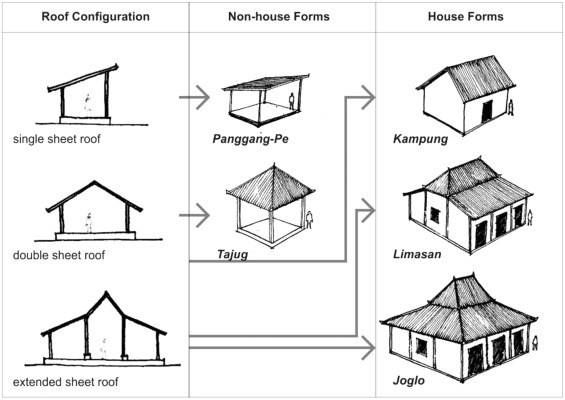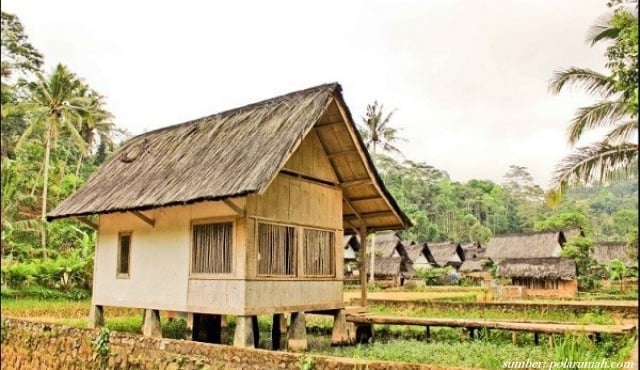
An Overview of Rumah Adat Rumah Limasan Trajumas Architecture
Indonesia is renowned for its rich and diverse cultural heritage, which is vividly reflected in its traditional architecture. Among the many indigenous house styles, Rumah Adat Rumah Limasan Trajumas stands out as a significant example of regional craftsmanship and cultural identity. This traditional house, rooted in local customs and environmental adaptations, embodies the unique aesthetic and functional principles of Indonesian architectural heritage. Understanding Rumah Limasan Trajumas offers valuable insights into the cultural history, social structure, and artistic expression of the community it represents. In this article, we explore the various aspects of Rumah Limasan Trajumas, from its architectural features to its cultural significance and contemporary challenges.
Overview of Rumah Adat Rumah Limasan Trajumas and Its Cultural Significance
Rumah Adat Rumah Limasan Trajumas is a traditional house originating from a specific region in Indonesia, often associated with the local community’s identity and social practices. Its name reflects the distinctive layered roof shape ("Limasan") and the local area or community name ("Trajumas"). This house serves not only as a residence but also as a cultural symbol representing the community’s values, social hierarchy, and relationship with nature. It is often used during important ceremonies, communal gatherings, and cultural events, reinforcing its role as a central element in social cohesion. The house’s design emphasizes harmony with the environment, spiritual beliefs, and respect for ancestral traditions, making it a vital part of the community’s cultural landscape.
The cultural significance of Rumah Limasan Trajumas extends beyond its physical structure. It embodies the community’s worldview, where space and architecture reflect social order, spiritual beliefs, and cultural continuity. The house often features symbolic decorations and motifs that convey stories, myths, and ancestral wisdom. Its construction and maintenance are community efforts, fostering a sense of collective identity and shared heritage. As a living cultural artifact, Rumah Limasan Trajumas helps preserve indigenous traditions and serves as a tangible link between generations, embodying the resilience and adaptability of local culture amidst modernization.
In addition to its cultural and social functions, Rumah Limasan Trajumas plays a role in local rituals related to life cycle events such as births, weddings, and funerals. These houses are often the venues for traditional ceremonies, where cultural expressions like dance, music, and storytelling take place. By doing so, they reinforce cultural continuity and serve as custodians of intangible heritage. The house’s architecture and layout are designed to facilitate these communal activities, making it an integral part of the community’s cultural identity and social fabric.
Furthermore, Rumah Limasan Trajumas has become a symbol of regional pride and cultural tourism. Visitors and scholars are drawn to its unique architectural style and cultural stories, promoting awareness and appreciation of local traditions. This recognition encourages efforts to preserve and promote the house’s cultural significance. As Indonesia continues to modernize, the Rumah Limasan Trajumas remains a vital reminder of indigenous ingenuity, serving both as a cultural treasure and a pedagogical tool for future generations to learn about their heritage.
In summary, Rumah Adat Rumah Limasan Trajumas is much more than a traditional dwelling; it is a cultural emblem that encapsulates the community’s history, beliefs, and social values. Its significance lies in its ability to connect the past with the present, fostering a sense of identity and continuity. Protecting and understanding this traditional house is essential for preserving Indonesia’s rich cultural diversity and ensuring that future generations can appreciate their ancestral roots.
Architectural Features of Rumah Limasan Trajumas in Traditional Indonesian Design
The architectural design of Rumah Limasan Trajumas is characterized by its distinctive layered roof, which resembles a series of ascending levels or "Limas." This roof shape, often pyramidal or conical, is constructed from natural materials such as thatch or timber, designed to shed rainwater efficiently and withstand the local climate. The house’s overall structure is typically rectangular, with a clear division between the front and rear sections, reflecting social and functional arrangements within the household. The architecture emphasizes harmony with nature, utilizing locally available materials and construction techniques that are environmentally sustainable.
One of the most notable features of Rumah Limasan Trajumas is its elevated foundation, which raises the house above ground level. This elevation helps protect the interior from flooding, pests, and soil moisture, a practical adaptation to the region’s tropical environment. The house is supported by wooden stilts or posts, which are often decorated with carvings or painted motifs that carry cultural symbolism. The space beneath the house, known as "panggung," serves various functions such as storage, work areas, or social spaces, reflecting the multifunctional nature of traditional Indonesian homes.
The interior layout of Rumah Limasan Trajumas typically includes separate spaces for different activities, such as sleeping, cooking, and communal gatherings. The interior design emphasizes simplicity and functionality, with wooden floors and partitions made from bamboo or woven mats. Walls are often made from woven bamboo or timber panels, allowing for ventilation and natural light. The open-plan design promotes airflow and cooling, essential for comfort in the tropical climate. Decorative elements, such as carved wooden panels or wall hangings, often depict local motifs and cultural symbols, adding aesthetic value to the functional spaces.
Structural elements of Rumah Limasan Trajumas reflect traditional Indonesian craftsmanship, with joints and connections made using wooden pegs, bamboo, and lashings rather than nails. This construction technique allows for flexibility and ease of repair, which is vital in a traditional setting. The roof’s layered design not only provides aesthetic appeal but also serves practical purposes, such as insulation and rainwater collection. The overall architectural style embodies a balance between practicality, cultural symbolism, and artistic expression, making Rumah Limasan Trajumas a distinctive example of Indonesian traditional architecture.
The building’s aesthetic is further enhanced by decorative details such as carved motifs, painted patterns, and symbolic ornaments that adorn the roof edges, pillars, and entrances. These embellishments often tell stories from local mythology or represent spiritual beliefs, reinforcing the cultural significance of the house. The use of natural materials and traditional construction techniques ensures that Rumah Limasan Trajumas remains environmentally friendly and culturally authentic, preserving the architectural heritage of the region.
In conclusion, the architectural features of Rumah Limasan Trajumas highlight a harmonious integration of form, function, and cultural symbolism. Its layered roof, elevated structure, and natural materials exemplify the ingenuity and aesthetic sensibility of traditional Indonesian architecture. These features not only serve practical purposes but also reflect the community’s spiritual and cultural worldview, making Rumah Limasan Trajumas a true embodiment of indigenous architectural wisdom.
Historical Development and Origins of Rumah Limasan Trajumas
The origins of Rumah Limasan Trajumas can be traced back centuries, rooted in the indigenous traditions and environmental adaptations of the local communities in Indonesia. Its development was influenced by the region’s climate, social organization, and spiritual beliefs, which shaped the architectural form and functional aspects of the house. Historically, the house served as a symbol of social status and cultural identity, often built by skilled craftsmen using locally sourced materials, passed down through generations. Its design evolved over time, incorporating elements that responded to changing environmental conditions and social needs.
The name "Limasan" refers to the house’s distinctive layered or pyramidal roof, which is believed to symbolize spiritual ascent and harmony with the cosmos. The "Trajumas" component links the house to a specific community or region, reflecting local variations in design and construction techniques. The development of Rumah Limasan Trajumas was also influenced by interactions with neighboring cultures and trade routes, which introduced new materials, motifs, and construction methods. Despite these influences, the core design remained rooted in indigenous principles, emphasizing sustainability, spirituality, and social cohesion.
Historically, these houses were built to accommodate extended families and community gatherings, reinforcing kinship ties and social hierarchy. The construction process was often communal, involving family members and local artisans, which fostered social bonds and cultural continuity. Over time, the architecture became more elaborate for ceremonial purposes, incorporating decorative carvings and symbolic motifs that conveyed cultural stories and ancestral homage. The house thus evolved into a cultural repository, encapsulating local mythology, beliefs, and social values.
During colonial periods and subsequent modernization, traditional Rumah Limasan Trajumas faced challenges from urbanization and external influences. However, efforts to preserve the style emerged as part of cultural revival movements, recognizing its importance as a regional identity marker. Historical records and oral histories suggest that the design has remained remarkably consistent, with adaptations primarily in materials and construction techniques to suit contemporary needs while maintaining traditional aesthetics. These houses stand today as living monuments to the resilience of indigenous architecture amid changing times.
The origins of Rumah Limasan Trajumas also reveal insights into the migration patterns and cultural exchanges of the region. As communities migrated or expanded, they adapted the traditional house design to new environments, leading to regional variants. This diversity underscores the dynamic nature of Indonesian indigenous architecture, where tradition and innovation coexist. Understanding its historical development helps in appreciating the cultural layers embedded within the house’s form and function, emphasizing its importance as a cultural heritage asset.
In essence, the history of Rumah Limasan Trajumas reflects a complex interplay of environmental adaptation, social structure, spiritual symbolism, and cultural resilience. Its development over centuries demonstrates how indigenous communities crafted architecture that not only protected them physically but also expressed their worldview and social identity. Recognizing its historical roots is crucial for appreciating its enduring significance and guiding preservation efforts for future generations.
Materials and Construction Techniques Used in Building Rumah Limasan Trajumas
Traditional construction of Rumah Limasan Trajumas relies heavily on locally available natural materials, reflecting the community’s resourcefulness and environmental harmony. The primary materials include timber, bamboo, thatch, and sometimes clay or mud for wall infill. Timber is used for the main structural elements such as poles, beams, and rafters, chosen for its durability and ease of carving. Bamboo serves as a versatile material for walls, partitions, and decorative elements, valued for its lightweight and strong



